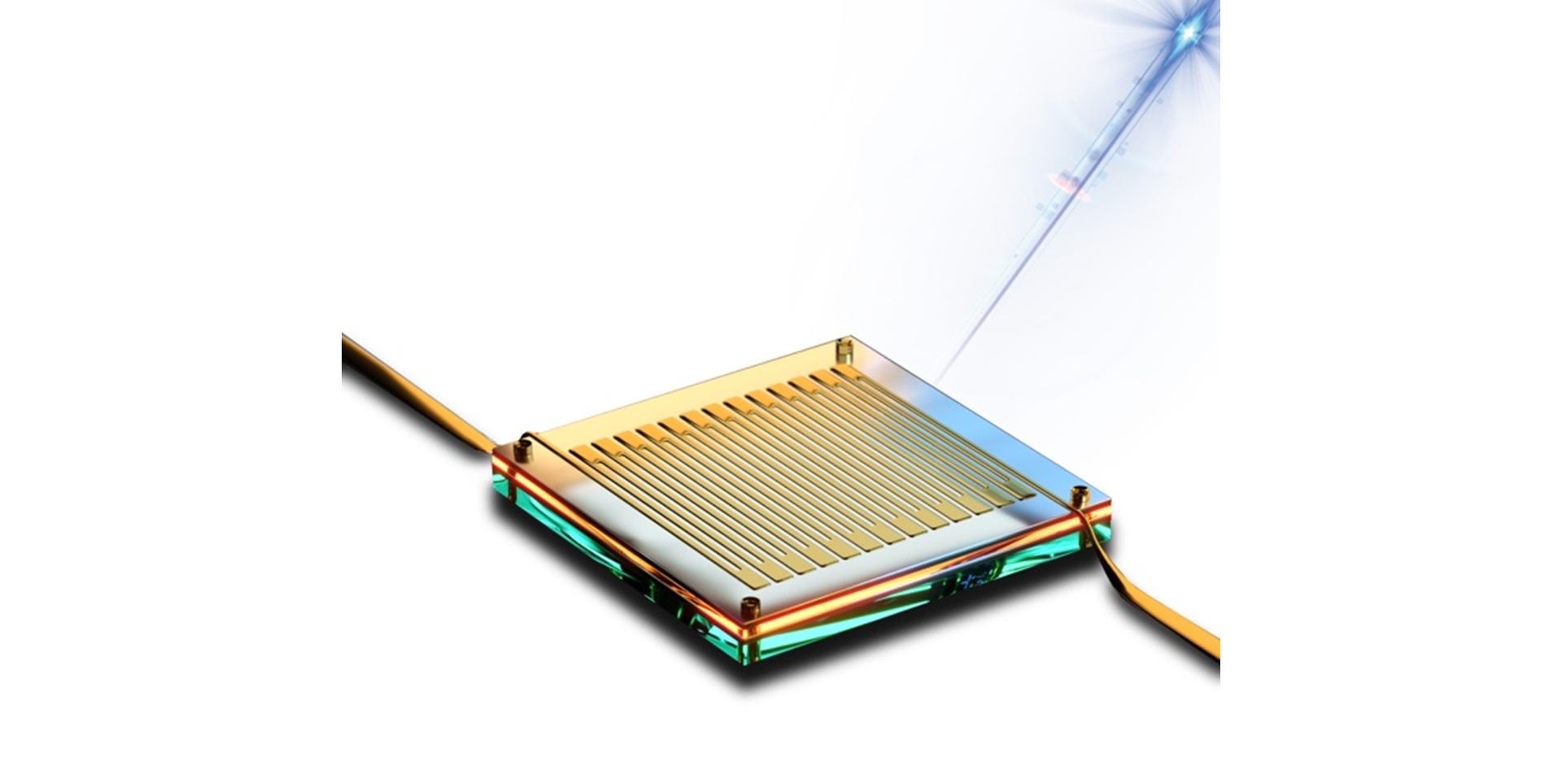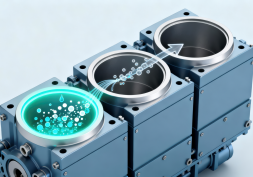Unconventional superconductors boost quantum sensors of light
Follow CDE

Innovative techniques for fabricating high-temperature superconducting nanowires enable single-photon detectors to operate at elevated temperatures, making them more versatile for applications across various domains.
Despite being the smallest constituent of light, photons hold enormous potential for revolutionising communication technology. In quantum networks, these particles act as flying qubits—the basic building blocks of information in such systems—and can be transmitted over long distances via fibre optic cables, enabling secure quantum communication.
Essential to realising scalable and efficient quantum networks is quantum key distribution, a secure communication method that relies on advanced components such as superconducting nanowire single-photon detectors (SNSPDs). Now, new research published in Nature Nanotechnology and led by Dr Ilya Charaev and Professor Karl Berggren (Massachusetts Institute of Technology), Assistant Professor Denis Bandurin (National University of Singapore, former Pappalardo Fellow at MIT), and Prof Ivan Božović (Brookhaven National Laboratory and Yale University), has achieved a trailblazing milestone in the area of SNSPDs.
Focusing on the materials used to construct the photon detectors, the team has fabricated novel light sensors using two cuprate compounds, materials that host superconducting electron systems with the highest critical temperature. Utilising such materials has enabled the operation of the detectors at elevated temperatures — a long-standing challenge in the field.
This breakthrough brings a range of benefits, including reduced cooling requirements, extended operating lifetimes, and improved performance, extending the potential applications of SNSPDs in areas from quantum cryptography and neuroimaging to gas sensing and space exploration.

Credit: Maxim Karmantsov
Innovation and ingenuity make the impossible possible
“For more than a century, superconductivity has been at the epicentre of research in condensed matter physics, giving rise to numerous practical devices that bring us convenience every day,” says Dr Ilya Charaev, one of the principal authors of the paper. “Among them, SNSPDs have recently become a cornerstone of quantum communication and sensing, owing to their high detection efficiency, broadband operation, exceptional signal-to-noise ratio, and fast recovery times.”
The operation of SNSPDs requires cooling the mounted nanowires to near absolute zero —coaxing them to enter a superconducting state. When a photon strikes the wire, it disrupts a Cooper pair of electrons — the building blocks of superconductivity. That generates a small amount of electricity that is quickly detected by the wire, indicating the presence of a photon.
Nonetheless, the challenge in operating SNSPDs lies in creating an optimal environment for their functioning. Conventional superconducting materials need to be cooled to extremely low critical temperatures at which they achieve superconductivity—a process achieved using expensive and bulky cryocoolers, which severely limits the practicality of the devices.
“Such limitations formed the impetus for our research goal to innovate novel SNSPDs based on high-temperature superconductors that do not require ultra-chilled conditions as traditional detectors,” says Asst Prof Denis Bandurin. Asst Prof Baldurin (Materials Science and Engineering Department, NUS College of Design and Engineering, one of the principal and corresponding authors of the paper.
The researchers discovered that the difficulty is not in overcoming the fundamental limits of the superconducting material itself but rather in how it is processed and fabricated into the nanowire. To work around this, the team devised a technique for shaping two cuprate compounds into nanowires using a focused beam of helium ions, demonstrating their ability to detect photons at elevated temperatures up to 25 K. “One type of such devices can be fabricated via a process called atomic-layer-by-layer molecular beam epitaxy — an advanced method that enables precise control of the device’s structure and material composition and scalable manufacturing of the devices,” says Prof Ivan Božović, the world expert in this unique technology.
“Despite two decades of experimental efforts to develop superconductors with high critical temperatures for SNSPDs, no workable devices were successfully created,” adds Prof. Denis Bandurin. “This fact, together with some discouraging theories, fueled beliefs that SNSPDs made of such materials are infeasible.”
The team’s findings are published in Nature Nanotechnology (link)

Communicating a brighter future in photonics
Having demonstrated that the novel devices are sensitive and functional at the crucial telecommunications wavelength of 1,500 nm, the team’s scientific endeavour opens new possibilities in various fields, including quantum-based satellite communication, metrology, remote sensing, correlation spectroscopy, and fluorescence lifetime imaging. Furthermore, the novel findings will drive further exploration into the yet-to-be-discovered mechanism that governs single-photon sensitivity in novel superconductors.
Asst Prof Bandurin, a NUS Presidential Young Professor, will continue to explore the interaction of electromagnetic radiation of various frequencies with novel material platforms with the goal of revealing novel fundamental phenomena and developing practical devices.
Related
Denis Bandurin ▏Assistant Professor, Department of Materials Science and Engineering ▏ LinkedIn Profile
Ilya Charaev ▏Senior Researcher, University of Zurich ▏ LinkedIn Profile
Related Departments
If you are interested to connect with us, email us at cdenews@nus.edu.sg








